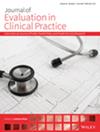Evaluation of a Fresh Fruits and Vegetables Prescription Program in Rural America
Abstract
Introduction
Voucher-based food as medicine programs have become a common method to help reduce the burden of chronic disease. While recent studies find these programs reduce HbA1c, few of these studies included a comparison group.
Objective
This article evaluates the impact of a clinically based voucher program on HbA1c of diabetic patients.
Methods
This study takes advantage of a natural experiment to create a robust control group. Individuals with diabetes or prediabetes were screened for food insecurity to enroll in the program. If a person enrolled, they would receive a voucher for fruits and vegetables at select stores for 6 months (N = 389). During a period of transition between voucher delivery methods, participants were put on a waiting list rather than enrolling. These individuals were identified as part of the control group (N = 36). Electronic medical record data was used to link individuals pre- and post-HbA1c. Inverse propensity score weighting (IPW) and nearest neighbor (NN) matching were used to determine treatment effects.
Results
After removing patients who did not have post-A1c measurements, there were 140 people included (treated = 120; control = 20). There was not found to be a statistically significant impact of voucher programs on HbA1c using IPW (b = 0.16, p = 0.659) or NN (b = 0.35, p = 0.071). Power analysis finds that this analysis was likely underpowered given the small effect size.
Conclusion
These results suggest that voucher programs may not be as effective at reducing HbA1c of diabetes patients as previously thought. However, there may be additional barriers that these kinds of programs may not be addressing. The author makes recommendations for how to rethink the focus of diabetes interventions for those with food insecurity.

 求助内容:
求助内容: 应助结果提醒方式:
应助结果提醒方式:


